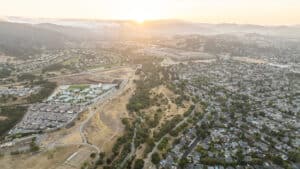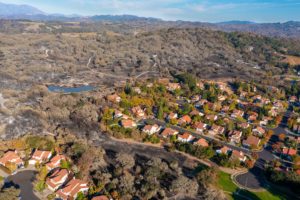Will we choose to invest in the vitality of our cities and towns by building infill housing that makes neighborhoods throughout our region places people are proud to call home? Or will we neglect our existing communities in order to fuel sprawl?
Planning for Infill Housing
In many ways, the people and leaders of the Bay Area have already made their choice. Our provocative 2009 infill housing research report Grow Smart Bay Area showed that the Bay Area can accommodate our next generation of growth through smart development that maintains and enhances the quality of our communities. The region-wide Plan Bay Area, adopted by the Association of Bay Area Governments (ABAG) and the Metropolitan Transportation Commission (MTC), envisions the placement of 100% of the region’s next generation of new homes and new jobs within existing urban boundaries, essentially affirming Grow Smart Bay Area.
Building Infill Housing: What’s the Problem?
But unfortunately, there is a problem. Although visionary plans have been adopted, policy and political barriers prevent key cities from achieving their infill potential. Now is the time to get into the weeds—to understand these barriers, city-by-city, and take action to overcome them.
Greenbelt Alliance’s Fixing the Foundation: Local Solutions for Infill Housing dives into the complex issues in 12 key cities across the Bay Area with high potential for infill housing development: Concord, Fremont, Mountain View, Oakland, Palo Alto, Redwood City, Santa Clara, Santa Rosa, San Francisco, San Jose, Sunnyvale, and Walnut Creek.
The Top 10 Barriers to Building Infill Housing in the Bay Area
- Political Challenges
- New Financing Challenges
- Traffic Analyses
- Lack Of Funding for Affordable Housing
- Prolonged Approval Processes
- Lack Of Funding for Infrastructure
- Small and Odd-Shaped Parcels
- Development Fees and the Market Misaligned
- Parking Requirements
- Complex Regional Regulatory Environment
Fixing the Foundation explains the 10 barriers to building infill housing across these cities and provides local solutions for overcoming them.
Our City by City analysis applies the report findings to each of the 12 cities, offering specific recommendations for local, tangible impact.
Looking for more? In Smart Infill, Greenbelt Alliance provided an in-depth, practical guide to help elected officials and local residents invest in their communities to create inviting neighborhoods where people can afford to live. This infill housing research report covers the most important actions local governments should take to set the stage for successful infill development—from planning to design to development—and includes case studies of some of the best infill from around the region. Local governments all over the region—from big cities like San Jose to traditional suburbs like Concord to small towns like Cloverdale and Morgan Hill— have crafted visionary plans for how infill development, not sprawl, will make their communities great for decades to come.



